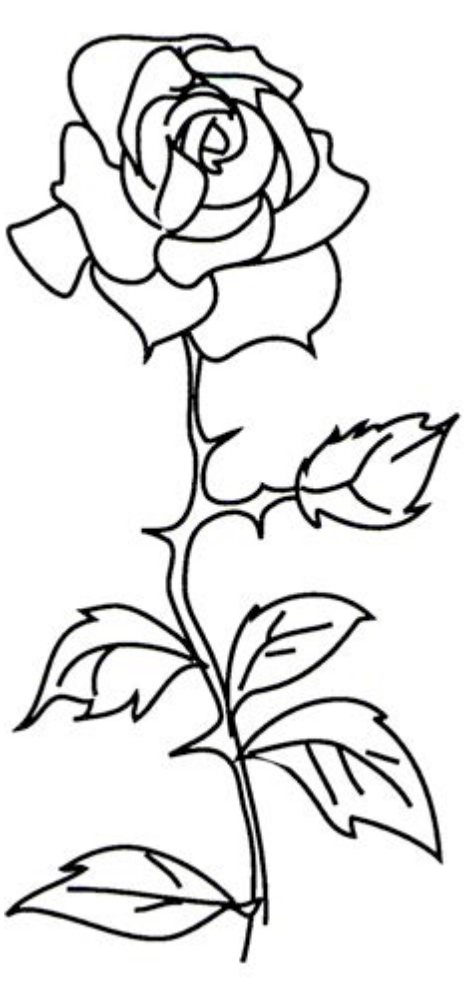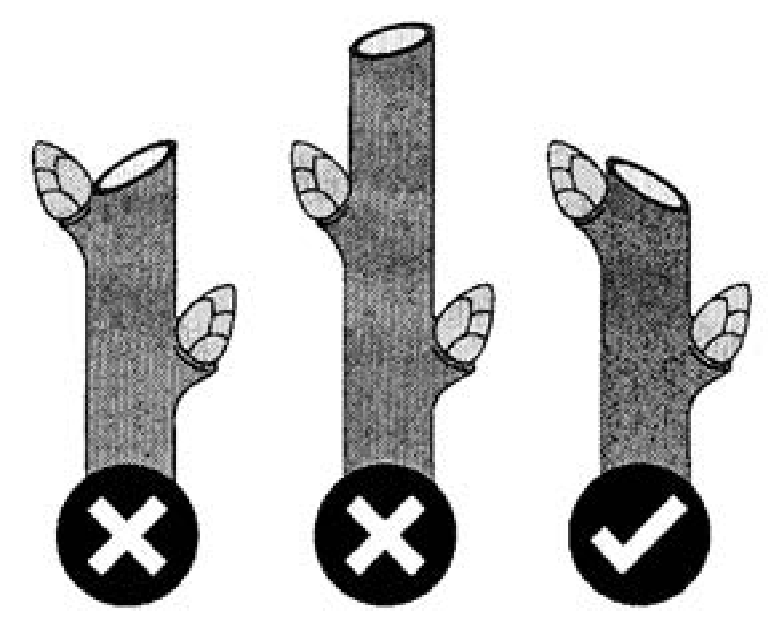Roses: Growing and Overwintering Tender Varieties
HGA-00138 View this publication in PDF form to print or download.
There is nothing quite so fragrant and lovely as a rose, especially one you grew yourself. In Alaska, roses can be grouped into two major types: “hardy” and “tender.” These categories are specific to Alaska and based on growers’ experiences. Hardy roses will overwinter successfully in our cold climate. There are differences statewide on which varieties do the best, but in general, the Rugosa rose (Rosa rugosa) is hardy in most locations. Tender roses do not reliably overwinter across Alaska. They include the hybrid teas, grandiflora, floribundas and miniature roses.
Gardeners motivated to grow tender roses in Alaska can either grow them as annuals or overwinter them in cool, dark locations. It is better to treat roses as an annual and buy new plants every spring if you do not have a good overwintering location. To successfully overwinter roses, it takes a healthy plant in the right condition, cool dark storage and proper care during the winter.
Proper summer care
 One of the most important ways to help the rose endure the long winter is to produce
a strong, healthy plant during the summer. Grow roses in a full-sun site with a highly
organic soil. This will allow the plant to grow sturdy. The plant should receive six
hours of direct sun at a minimum. Transplant into a rich soil, draping the roots over
a cone of a compost or well-rotted manure mixed with bone meal or phosphorus fertilizer.
A good weed-free potting mix will also work if compost is not available. Keep the
soil evenly moist by watering at least twice a week. Fertilize once a week with a
soluble fertilizer during the months of May, June and July. Proper care will allow
the plant to build up the food reserves needed to make it through the long winters
and to ensure that the spring growth is healthy and strong.
One of the most important ways to help the rose endure the long winter is to produce
a strong, healthy plant during the summer. Grow roses in a full-sun site with a highly
organic soil. This will allow the plant to grow sturdy. The plant should receive six
hours of direct sun at a minimum. Transplant into a rich soil, draping the roots over
a cone of a compost or well-rotted manure mixed with bone meal or phosphorus fertilizer.
A good weed-free potting mix will also work if compost is not available. Keep the
soil evenly moist by watering at least twice a week. Fertilize once a week with a
soluble fertilizer during the months of May, June and July. Proper care will allow
the plant to build up the food reserves needed to make it through the long winters
and to ensure that the spring growth is healthy and strong.
When to cut flowers
With most flowers, it is recommended to cut them in the early morning. Not so with roses — roses should be cut late in the day. Roses cut after 4:30 p.m. will last 10 hours longer than ones cut in the morning. It is thought that the extra supply of sugar that the leaves store during the day helps to nourish the flowers after they are cut. Cut the stems at a 45-degree angle facing toward the center of the plant and leaving an outside bud on the top (see Figure 1). Blooms will develop just below the angled cut and grow outward, allowing more light to reach the center of the plant. It is best to leave five sets of leaves below the cut. The leaves provide the energy needed to produce more and larger flowers.
Preparing for winter
By August, cooler outdoor temperatures and shorter days give plants the signal that winter is approaching. Both tell the plant to toughen up and shut down. Stop fertilizing by the first of August, about four to six weeks before a hard frost is expected. Late fertilizing will encourage the plant to grow and have new soft stems that are susceptible to winter damage. Cut back on watering and allow the rose to slightly dry out. Because growth is slower, the rose will not need as much water. Excess water increases diseases. Don’t be alarmed by yellowing leaves. Leaves begin to turn yellow as the plant draws food into the roots. This is a good indication that the plant is on schedule and preparing for its winter nap.
Bring the plant indoors
The rose plant will take a light frost and this will help the plant defoliate. When temperatures are expected to drop below 28°F, bring the plant indoors. A good overwintering site is dark and between 34° and 40°F. Root cellars, unheated crawl spaces, basement corners and garages can work if kept from freezing. If the temperature warms up during the winter, the rose will resume growth and use up reserves. It may take some trial and error to find the best spot. A minimum/maximum thermometer is a good tool for identifying the best location.
Pruning the plant
Roses should be pruned as they grow all summer long. Cut out thin, spindly growth, any sprouts growing from the roots, diseased stems and old flowers. After the plant has been brought indoors for the winter, do a hard pruning. Prune back the plant to approximately 18 inches tall. Locate a strong outside bud where the leaf is attached to the stem. An outside bud will be opposite the center. Make the cut ¼ inch above the bud and angled towards the center of the plant. Use a tool with sharp blades. Cut at a 45-degree angle, with the cutting blade on the lower side to ensure a clean cut.

Winter care
Warm temperatures and light will encourage the plant to come out of dormancy too early. If the overwintering location is not totally dark, cover the plant with a paper bag. The paper bag will allow the plant to breath while creating darkness. Water occasionally to keep the soil from completely drying out. One cup of water once a week on a covered plant works well for most situations. Do not fertilize. The plant does not need fertilizer when it is not growing.
Roses are waking up
In February or early March the rose bush will be ready to wake up and begin to sprout. Strong sprouts will appear and it will be time to put the bush in the light for the new growing season. This is a good sign — you have succeeded in overwintering your rose bush. It is an indication that you have been diligent in your watering and have properly cared for the rose in the previous season. Go ahead and feel proud of your accomplishment.
Lightly prune
Inspect the plant for injury and trim back. The dead wood that is brown and dried with shriveled bark is trimmed off first. Next, cut thin, weak shoots to the base. Finally, shorten the remaining branches by one-third. If you want a few large blooms, cut the length by two-thirds. If you want more, but smaller flowers, do not shorten these stems. Approximately six healthy leaves are required to manufacture sufficient food to produce an average blossom. All cuts should be made just above an outside bud and at an angle.
Bright light
Developing rose plants need lots of light. Full sun for eight hours a day is best. Put them in a south-facing window or under fluorescent lights until they can be put outdoors. Roses like a continuous moist soil without wet feet. When watering, be sure that the entire root ball gets moistened. In a root-bound situation, water will often move down the side of the pot without getting water to the center of the root ball. Apply a layer of mulch to the top of the pot to help conserve water. A layer of rich compost, earthworm castings and sphagnum moss will help to provide a slow release fertilizer and discourage diseases.
Spring fertilizing
The amount of fertilizer applied should be in proportion to the size of the plant. The larger the plant, the larger the amount of fertilizer needed. In early spring, start with a very diluted liquid fertilizer. As the amount of light and growth increases, add more fertilizer. Use the color of the foliage as an indication of the plant’s fertilizer needs. By June, with adequate sun, the foliage should be a lush dark green. Pale yellow is an indication that the plant is not getting enough nitrogen. Remember, it is better to underfertilize rather than overfertilize.
Tender roses can be overwintered in Alaska with just a little extra care. Remember that the overall health and strength of the plant throughout the summer will determine how well the plant survives. Take care of your roses all summer long and enjoy the fragrant blooms!
Meriam Karlsson, Professor of Horticulture, School of Natural Resources and Extension. Originally prepared by Michele Hébert, Extension Sustainability Agent.
Reviewed November 2024
